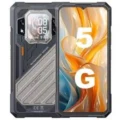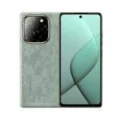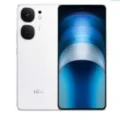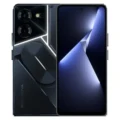Apple iPad mini 4 (2015)






- : 2GB RAM Apple A8
- : 7.9" 1536x2048 pixels
- : 5124mAh Li-Ion
- : 8MP 1080p
The Apple iPad Mini 4, released in 2015, revolutionized the tablet market with its compact design and powerful features. This 7.9-inch tablet combines portability and performance, making it an ideal choice for users seeking a versatile device.
With a sleek and lightweight aluminum body, the iPad Mini 4 is easy to carry, fitting comfortably in one hand. The 7.9-inch Retina display delivers stunning visuals, boasting vivid colors and sharp details for an immersive viewing experience. Whether you’re browsing the web, watching videos, or playing games, the display ensures crisp and clear visuals.
Under the hood, the iPad Mini 4 is powered by Apple’s A8 chip, providing seamless multitasking and swift app responsiveness. The 8-megapixel rear camera captures high-quality photos and 1080p HD videos, while the 1.2-megapixel front camera is perfect for FaceTime calls and selfies.
Running on iOS, the iPad Mini 4 ensures a user-friendly interface and access to a vast ecosystem of apps through the App Store. The tablet supports Touch ID, offering secure and convenient authentication for unlocking the device and authorizing app purchases.
Connectivity options include Wi-Fi and optional cellular capabilities, enabling users to stay connected on the go. The iPad Mini 4 also supports Apple Pencil, providing a precise and natural drawing and note-taking experience for creative individuals and professionals alike.
In summary, the Apple iPad Mini 4 (2015) is a compact powerhouse, combining a portable design with robust performance. Its impressive display, powerful internals, and compatibility with accessories make it an enduring choice for users seeking a reliable and versatile tablet experience. Whether for work, entertainment, or creativity, the iPad Mini 4 remains a compelling option in the tablet market.
Specs
Network
| 2G Network GSM 850 / 900 / 1800 / 1900 - SIM 1 & SIM 2 (dual-SIM) CDMA 800 / 1900 |
GSM 850 / 900 / 1800 / 1900 DMA 800 / 1900 |
| 3G Network |
HSDPA 850 / 900 / 1700 / 1900 / 2100 CDMA2000 1xEV-DO |
| 4G Network |
1, 2, 3, 4, 5, 7, 8, 13, 17, 18, 19, 20, 25, 26, 28, 29, 38, 39, 40, 41 - A1490 |
| Speed |
HSPA 42.2/5.76 Mbps, LTE-A Cat4 150/50 Mbps, EV-DO Rev.A 3.1 Mbps |
LAUNCH
| Announced | November, 2025 |
| Status |
Discontinued |
BODY
| Dimensions | 203.2 x 134.8 x 6.1 mm (8.0 x 5.31 x 0.24 in) |
| Weight | 299 g (Wi-Fi) / 304 g (3G/LTE) (10.55 oz) |
| Build | Glass front, aluminum back, aluminum frame |
| SIMs SIM (Subscriber Identity Module) is a small card that contains mobile network subscriber's account information. This allows the phone using the card to attach to a mobile network. The SIM card is most commonly associated with GSM and UMTS mobile networks. Moving a SIM card from one phone to another allows a subscriber to switch mobile phones without having to contact their mobile network carrier. SIM cards can also be used by a phone to store limited amounts of data, such as phone numbers and text messages. |
Nano-SIM and eSIM |
Display
| Display Type Display Technology => A number of display technologies and types used in mobile phones => TFT (Thin Film Transistor), IPS (In-Place Switching), OLED (Organic Light Emitting Diode), AMOLED (Active-Matrix Organic Light-Emitting Diode), Super AMOLED (an even advanced version of AMOLED), Resistive Touchscreen (Resistive touchscreens contain two layer of conductive material with a very small gap between them which acts as a resistance), Capacitive Touchsceen (Capacitive touchscreen technology consists of a layer of glass coated with a transparent conductor) | IPS LCD |
| Size | 7.9 inches, 193.3 cm2 (~70.6% screen-to-body ratio) |
| Resolution | 1536 x 2048 pixels, 4:3 ratio (~324 ppi density) |
| Protection Display Protection => Gorilla Glass is a special alkali-aluminosilicate glass shield with exceptional damage resistance that helps protect mobile displays from scratches, drops, and bumps of everyday use, It is always better to go for a smartphone with Gorilla Glass for that added protection and peace of mind. | Scratch-resistant glass, oleophobic coating |
PLATFORM
| Operating System OS => Every computer system run on a base software called Operating System (OS). Operating System controls all basic operations of the computer (such as smartphone, PDAs, tablet computers and other handheld devices). The Operating System allows the user to install and run third party applications (apps), apps are used to add new functionality to the device. | iOS 9, upgradable to iPadOS 15.7 |
| Chipset Chipset is a group of integrated circuits designed to perform one or a more dedicated functions, often with real time computing constraints, Popular smartphones are equipped with more advanced embedded chipsets that can do many different tasks depending on their programming. | Apple A8 (20 nm) |
| CPU CPU (Central Processing Unit) mostly known as processors, CPU processes instructions in order to carry out certain functions that make your device operate properly. Processors are often described as the brain of computers, smartphones and tablets, Smartphones and tablets rely on processors to carry out their every task, Processors are an incredibly important factor in selecting any type of computing device, including your smartphone. | Dual-core 1.5 GHz Typhoon |
| GPU GPU (Graphics Processing Unit) is a single-chip processor designed to rapidly manipulate and alter memory to accelerate the creation of images in a frame buffer intended for output to a display, This includes things such as lighting effects, object transformations, and 3D motion. | PowerVR GX6450 (quad-core graphics) |
MEMORY
| Card Slot Memory Card Slot is a special slot for inserting a memory card. Memory cards allow you to expand the phone's built-in memory, A memory card (sometimes called a flash memory card or a storage card) is a small storage medium used to store data such as text, pictures, audio, and video, for use on small, portable or remote computing devices such as mobile phones, mp3 players, digital cameras. | No |
| Internal | 16GB 2GB RAM, 32GB 2GB RAM, 64GB 2GB RAM, 128GB 2GB RAM |
MAIN CAMERA
| Cameras Specs Today’s smartphones come equipped with a very comprehensive set of camera related specifications. Our smartphone, for many of us, has become our primary camera due to it being the one we always have with us. |
8 MP, f/2.4, 32mm (standard), 1.12µm, AF |
| Video | 1080p@30fps |
| Camera Features |
HDR |
SELFIE CAMERA
| Cameras Specs Today’s smartphones come equipped with a very comprehensive set of camera related specifications. Our smartphone, for many of us, has become our primary camera due to it being the one we always have with us. |
1.2 MP, f/2.2, 31mm (standard) |
| Features |
HDR |
| Video | 720p@30fps |
SOUND
| Loudspeaker | Yes, with stereo speakers |
| 3.5mm jack | Yes |
COMMS
| WLAN |
Wi-Fi 802.11 a/b/g/n/ac, dual-band, hotspot |
| Positioning |
GPS, GLONASS (3G/LTE model only) |
| Bluetooth Bluetooth is a wireless communications technology for exchanging data between mobile phones, headsets, computers and other network devices over short distances without wires, Bluetooth technology was primarily designed to support simple wireless networking of personal consumer devices. | 4.0, A2DP, EDR |
| Infrared Infrared connectivity is an old wireless technology used to connect two electronic devices. It uses a beam of infrared light to transmit information and so requires direct line of sight and operates only at close range. | |
| USB | Lightning, USB 2.0 |
| NFC NFC (Near field communication) is a set of standards for smartphones and similar devices to establish peer-to-peer radio communications with each other by touching them together or bringing them into proximity, usually no more than a few inches. | |
| Radio |
Features
| Sensors Sensors are electronic components that detects and responds to some type of input from the physical environment. The specific input could be light, heat, motion, moisture, pressure and location, The output is generally a signal that is converted to use in computing systems, a location sensor, such as a GPS receiver is able to detect current location of your electronic device. |
Fingerprint (front-mounted), accelerometer, gyro, compass, barometer |
BATTERY
| Battery Type Battery Type => Cell phones run on various kinds of batteries depending on the manufacturer, phone size or shape and features. There are basically four types of cell phone batteries => Lithium Polymer, Lithium Ion, Nickel Metal Hydride and Nickel Cadmium. | Li-Ion (Lithium Ion) |
| Capacity Battery Capacity is a measure (typically in Amp-hr) of the charge stored by the battery, and is determined by the mass of active material contained in the battery. The battery capacity represents the maximum amount of energy that can be extracted from the battery under certain conditions. | 5124 mAh |
| Placement | non-removable (19.1 Wh) |
MISC
| Colors |
Space Gray, Silver, Gold |
| Model | A1538, A1550, iPad5,1, iPad5,2 |
| SAR SAR (Specific absorption rate): Each GSM handset has a radio transmitter and receiver in order to operate in the wireless GSM network. That transceiver is manufactured so that when used next to the ear and when worn on the belt, it won't exceed the limits for exposure to radio frequency energy set by the authorities.The authorities in question here are the Federal Communications Commission (FCC) of the U.S. Government, Industry Canada of the Canadian Government (IC), and the Council of the European Union. |
1.18 W/kg (body) |
| SAR EU Each GSM handset has a radio transmitter and receiver in order to operate in the wireless GSM network. That transceiver is manufactured so that when used next to the ear and when worn on the belt, it won't exceed the limits for exposure to radio frequency energy set by the authorities.The authorities in question here are the Federal Communications Commission (FCC) of the U.S. Government, Industry Canada of the Canadian Government (IC), and the Council of the European Union. |
0.42 W/kg (body) |
| Price |
About 360 EUR |
TESTS
Reviews
Disclaimer Note
We strive to maintain accurate and up-to-date content on our website for general information purposes only. Please refrain from using the material for business, legal, or any other decisions.



















